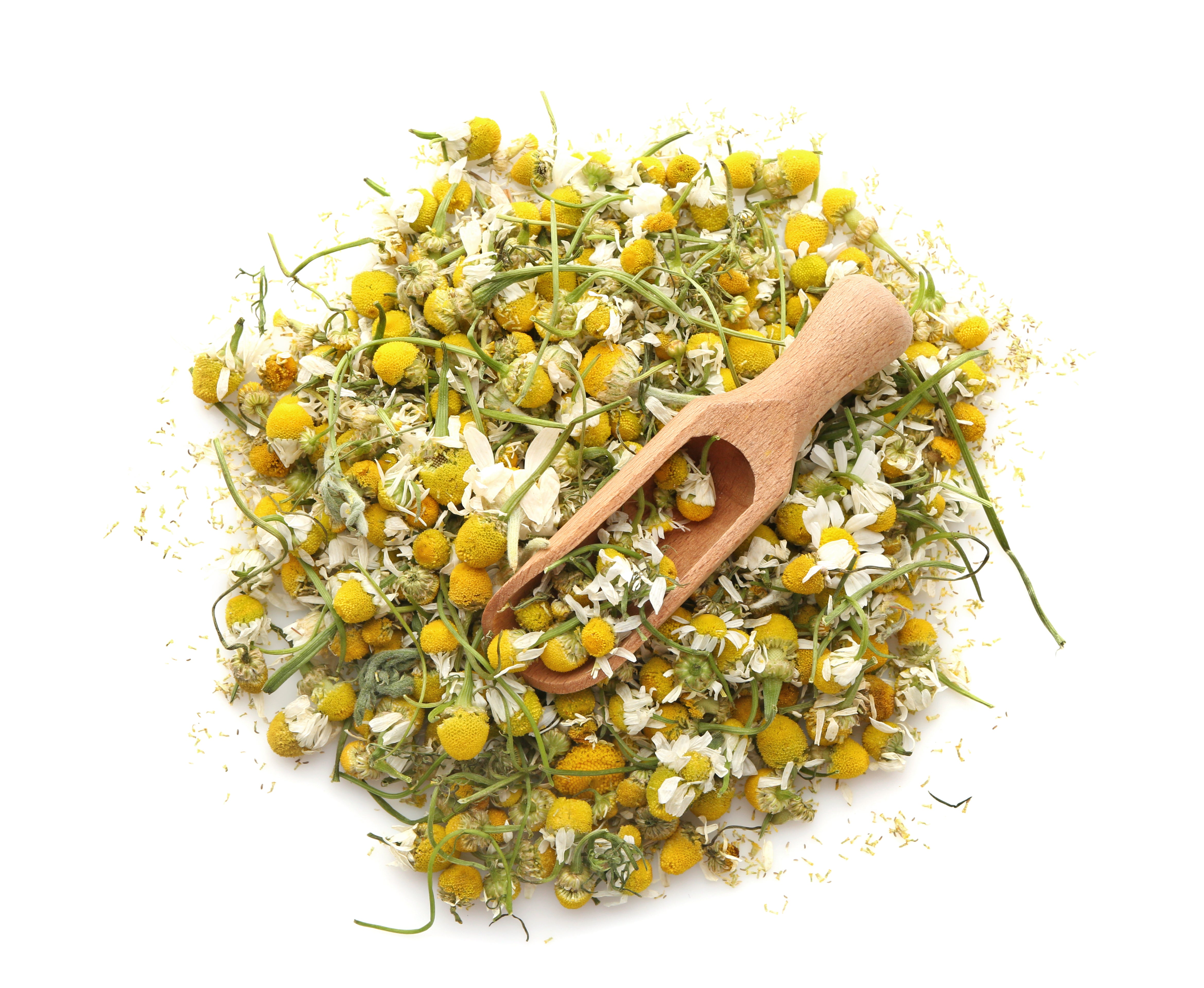Growing (German) Chamomile Herb Seed
- Other Names: Water of Youth, Wild Chamomile
- Days to Maturity: Annual, 60+
- Hardiness Zone: 1-13
- Planting Depth: 1/2"
- Plant Spacing: 8-12”
- Growth Habit: Upright
- Soil Preference: Well-drained
- Temp Preference: Warm
- Light Preference: Full sun
- Color: Green
- Flavor: Sweet flavor and bright aroma
- Misconceptions: Roman Chamomile and German Chamomile are often confused for each other
- Availability: See All Chamomile Varieties

>>> See Full Herb Grow Guide List <<<
Difference Between Roman and German Chamomile
Several plant species are referred to as chamomile but Roman (Eriocephalus punctulatus) and German (Matricaria discoidia) are the most popular varieties grown in home gardens and used in products, such as tea and soaps. As you can see by the latin names, they are two completely unrelated plant species yet they exhibit many of the same characteristics, such as adorning little white flowers with yellow buds that are great at attracting polinators to your garden. Roman Chamomiile, often referred to as "true chamomile" is predominatly ground as a ground cover, replacing lawn grass in many cases. German Chamomile, referred to as "false chamomile", is ironically the species most commonly grown as an herb. The following growing instructions can be used for both species, as their growth requirements are similar; however, as they develop, Roman spreads while German grows upright.
Starting Chamomile Seeds Indoors and Outdoors
Starting Indoors and Transplanting Later - Similar to many other herbs, you can opt to start them indoors and transplant them later when the last frost is behind you. If you choose to start your chamomile seeds indoors, do so in plug trays 6 to 8 weeks before the final frost of spring. When seedlings emerge after a couple of weeks, you'll need to provide artificial light via grow lights for successful maturity. Use full spectrum lights and provide at least 12 to 16 hours of that light per day. Fertilize seedlings one time a week or two after the true leaves appear. When all threat of frost has past and your chamomile has two sets of true leaves, you can begin the hardening off process. Once that is done, transplant in your garden bed or container. If you choose to plant in a container, you'll need to fertilize chamomile once a month.
Direct Sowing Outdoors When the Time is Right - Sowing your seeds outdoors when temperatures are right takes out a lot of the light requirements that comes with starting chamomile seedlings indoors while winter fades away. The full sun that they need will be available to your young chamomile seedlings as they develop outdoors. Begin by clearing away any debris or weeds from your garden bed and sow your chamomile seeds. Be sure to plant in a region where it receives full sun. Water heavily to begin with to aid in germination, but after that, just aim at keeping soil moist to the touch.
***Note: Chamomile, like many other herbs, prefer well draining soil. Consider adding a little sand to your garden bed soil or to your potting soil when transplanting your chamomile seedling or direct sowing your chamomile seeds. This will helpto keep chamomile roots from becoming waterlogged, possibly leading to the plant wilting and dying.
Growing and Maintaining Chamomile Herbs
Water when the soil feels that it is almost completely dry. The aim is to keep the soil that houses chamomile moist to the touch--not soggy. It should aso have some give when you press down on it. If your soil is hardpacked, it is most likely too heavy with clay.
Noteably, Roman chamomile will begin spreading out, which should be expected when growing that species of chamomile.
Possible Pests Common to Chamomile
- Aphids - small pint-sized bugs that eat away at the leafy parts of your chamomile.
- Mealy Bugs - a type of scale insect that populate humid areas with overly moist soil.
- Spider Mites - very small mites that live on the underside of tender leaves.
Recommendations: Introduce beneficial insect predators such as lady bugs, lace wings, and parasitic wasps. These insects attack the pest above and more. These beneficial predators help to promote a symbiosis in your garden.
Possible Diseases Common to Chamomile
- Botrytis Blight - yellow brown spots that lead to a fuzzy growth, ultimately leading to plant rot.
- Powdery Mildew - a white powdery-like growth which will weaken chamomile, leading to plant death.
- Dampen Off - Seedlings will appear healthy until they suddenly weaken and die. Due to too much moisture in soil where that fungus thrives.
- Root Rot and Crown Rot - yellowing leaves and drying leaf tips.
Recommendations: Make sure your soil is clear of debris and weeds. Keep soil from getting too wet and bogged down with moisture so that air circulation is optimal. Fungal diseases often come out of overly moist conditions.
Chamomile as a Companion Plant
Chamomile is known to attract beneficial pollinators, such as bees and hoverflies, as well as beneficial predators, such as parasitic wasps and tachinid flies. Intersperse chamomile throughout you vegetable garden to achieve these chamomile benefits.
Harvesting Chamomile Flowers
The flowers are the most coveted part of German chamomile; very rarely will the leaves be harvested. Flower petals will begin to bend backward—that is when you know that chamomile flowers are ready to harvest. Be sure to harvest them quickly as German chamomile flowers reseed quickly after this stage.
The most popular use of chamomile flowers is making tea.
Additional Information on Chamomile Herb
- Chamomile Wikipedia Page
- Read the Best Practices for Planning Your Herb Garden!
- Learn About Hardiness Zones



